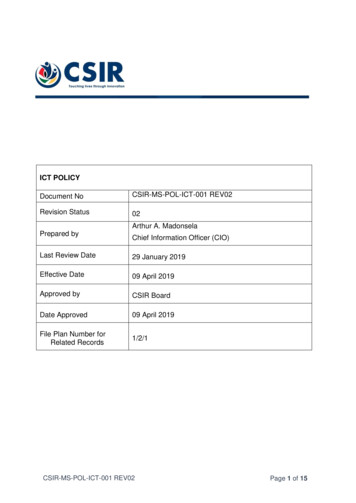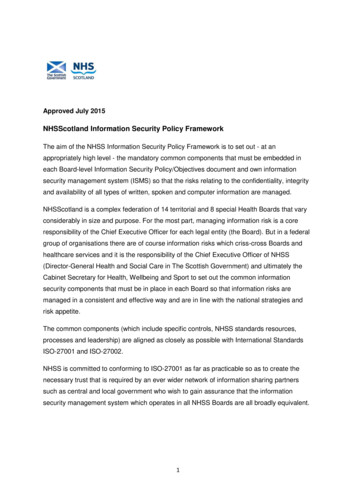
Transcription
Approved July 2015NHSScotland Information Security Policy FrameworkThe aim of the NHSS Information Security Policy Framework is to set out - at anappropriately high level - the mandatory common components that must be embedded ineach Board-level Information Security Policy/Objectives document and own informationsecurity management system (ISMS) so that the risks relating to the confidentiality, integrityand availability of all types of written, spoken and computer information are managed.NHSScotland is a complex federation of 14 territorial and 8 special Health Boards that varyconsiderably in size and purpose. For the most part, managing information risk is a coreresponsibility of the Chief Executive Officer for each legal entity (the Board). But in a federalgroup of organisations there are of course information risks which criss-cross Boards andhealthcare services and it is the responsibility of the Chief Executive Officer of NHSS(Director-General Health and Social Care in The Scottish Government) and ultimately theCabinet Secretary for Health, Wellbeing and Sport to set out the common informationsecurity components that must be in place in each Board so that information risks aremanaged in a consistent and effective way and are in line with the national strategies andrisk appetite.The common components (which include specific controls, NHSS standards resources,processes and leadership) are aligned as closely as possible with International StandardsISO-27001 and ISO-27002.NHSS is committed to conforming to ISO-27001 as far as practicable so as to create thenecessary trust that is required by an ever wider network of information sharing partnerssuch as central and local government who wish to gain assurance that the informationsecurity management system which operates in all NHSS Boards are all broadly equivalent.1
1) Leadership and commitmentBoard Chief Executive Officers shall demonstrate leadership and commitment with respectto information security management by ensuring that the Board-level information securitypolicy, security objectives and information security management system (ISMS) areestablished and are compatible with the strategic direction of both the organisation andNHSS as a whole. Establish a Board-level information security management system that integrates wellinto the other functions of the organisation such as Information Governance, eHealthand estates/physical security and Human Resources. Ensure that resources needed for the effective operation of the ISMS are availableand is supported by top management. Establish a Board-level information security policy that is appropriate to the needs ofboth the organisation and aligned with the NHSS information security policyframework. Assign the role of senior information risk owner (SIRO) at executive level to ensurethat the above is undertaken and performance on the ISMS reported to themanagement board at regular intervals. Ensure that all of the above is communicated to staff, business partners and thewider public to ensure that trust and confidence is maintained in health and careservices.2) Information Security ObjectivesThe Board shall establish high level information security objectives for the entireorganisation.The Board information security objectives shall be aligned with: NHSS eHealth Strategy, so that the Information security function and ISMS supportall seven strategic aims. NHSS/SG Information Governance Improvement Plan. The set of specific, measurable actions relating to information security to beundertaken at national level over a defined period as part of NHSS eHealthProgramme.2
The Board specific actions that need to be undertaken, the planning, resources, timescale, persons responsible and how/when results to be evaluated.3) Information Security PolicyEach Board shall establish its own information security policy which includes components ofthe NHSS Information Security Policy Framework, national controls and standards as well asspecific local policiesThis policy shall be communicated with all staff and interested parties and revised at regularintervals.4) Information Security Management SystemEach Board shall establish, implement, maintain and continually improve an informationsecurity management system.‘System’ in this context does not mean an ‘IT system’ but rather the dynamic and neverending circular business system: which starts with planning, then building, then acting, thenchecking then planning again.Simply having the information security post being filled (e.g. information security officer) thatcan react to incidents does not equal having an ISMS. Each Board shall act upon anddocument the key components (detailed below) that make up its ISMS.4.1 ScopeEach Board shall determine the boundaries and scope of its ISMS and associated policy.Each Board has business relationships with an array of partners, ranging from localauthorities, emerging health and social care partnerships, third sector, universities andcommercial suppliers. Although there should be information sharing agreements withpartners/suppliers and they may share the IT network and other computing resources itwould simply not be practical for the Board ISMS to cover this whole landscape. Instead, theBoard ISMS and associated policy should be defined (i.e. to cover all the operations of thehealth Board). If the Board is to encompass the operations of other organisations (e.g.because of a shared service agreement with GPs or health and social care partnership) thenthis needs to be documented and resourced accordingly. Where two separate organisationsenter into information sharing agreements both will need to agree on where one or more3
ISMS interface (and where any differences in information security policy might lead todifferences in risk management).4.2 PlanningHaving established scope and contours of the ISMS (where responsibility begins and endsfor the Board operations and cognisant of all the interested parties) the Board shall: Establish the factors that provide opportunities for the setting up and running of theISMS and ensure that these are exploited (e.g. mature risk management processesin other areas such as finance or existing ICT staff trained in ITIL or othermethodology which use documented processes). Establish the risks that may prevent the ISMS from being established, working asintended and being able to achieve continual improvement (e.g. lack of resourcing,cultural issues, an organisational structure that has grown up organically or otherfactors that would prevent the smooth running of the ISMS machine). Consider how far the ISMS needs to work beyond the current information securityfunction (which may be within an eHealth department) but requires interaction withresource elsewhere (information governance, records management etc.) Take action to address these risks at executive level.4.3 ResourcesSubsequent to planning and review the Board shall determine and provide theresources needed for the establishment and continual improvement of the ISMS.Each Board shall: Be clear that the roles in information security are part of a professional specialistdiscipline and career home (analogous to ICT, finance, procurement, statistics etc.)and not a generalist NHS administration role. As a minimum there should be the designated permanent role of Board InformationSecurity Officer/Manager that encompasses all information risks (not just ‘ITSecurity’) and is of appropriate grade and standing. The appointed person(s) shall be competent and have the necessary specialisttraining and experience. If this is not possible on Day 1 then the Board SIRO needsto bear the risk and take action to ensure that the necessary competence is acquiredas soon as possible (and for this to be documented).4
To provide on-going training and support for information security personnel (i.e.mentoring, resource to gain necessary professional accreditation and qualifications)and for this to be documented. To ensure that the personnel are able to participate fully in national-levelcommunities (IG and ISO Fora) and governance structures (e.g. Public Benefit andPrivacy Panel) and accreditation work (e.g. Scottish Wide Area Network and servicesused across Boards) so that national level information risks are addressed in aneffective way.4.4 Staff awareness and communicationsThe Board shall put in place the means to conduct internal and externalcommunications and awareness relevant to its information security managementsystem. The outcome should be: The Board-level information security management policy and associated securityobjectives should be freely available to all employees, interested parties and thewider public. Board level policies and guidance should be available to all staff and interestedparties digitally (e.g. via the Intranet). There is a form of mandatory induction for all new personnel in regard to Boardinformation security policy and that this is followed. There is a process to enable information security updates, advice and other contentto be available in a timely manner.4.5DocumentationThe Board shall hold documented information relating to the design and effectiverunning of its ISMS. To be held in a digital format in the Board approved corporate recordsmanagement system. For information relating to the ISMS to be held as one or more discretefunctions within a file plan/business classification scheme and managedaccording to Board records disposal and retention schedules.5
To be easily accessible to persons requiring them to support the smoothrunning of the ISMS, kept up to date and subject to the security and accesspermissions commensurate with the sensitivity.5) Information Risk AssessmentThe Board shall identify key assets and their owners and document in a high-levelInformation Asset Register (IAR) following an agreed national template. Impact on assetsneeds to be assessed in terms of confidentiality, integrity and availability.The Board shall use the NHSS Information security risk assessment template andassociated process and the national impact levels. This ensures that repeated informationsecurity risk assessments produce consistent valid and comparable results across allBoards. In particular: The business context must be fully understood prior to assessment. Risk owners, and owner of assets must be identified. Plausible worst case scenarios and business impact must be understood anddocumented - according to the national impact scale 1-5 - if overall risks toconfidentiality, integrity and availability materialise. Vulnerabilities and likelihood must be assessed. Overall risk analysis must use the criteria above. Analysed risks must be prioritised and summarised into a format that can be easilyunderstood for risk owners to agree subsequent risk treatment.The Board shall perform information security risk assessments at planned intervals whensignificant changes are proposed to occur or where recommended in wake of significantinformation security incidents. Such assessments can be at organisational-level, functionlevel, project or service specific level.6) Information Security Risk TreatmentThe Board must define and use consistently an information security risk treatment processthat: Selects appropriate information security risk options for the information riskassessment results. Determine all the controls that are necessary to treat the information security options.6
Ensure that all the Reference control objectives and control types cited in ISO-27001are considered and verify that none have been omitted. Ensure that the relevant NHSS National-level mandatory controls and standards areimplemented including that of the Scottish Wide Area Network (SWAN). Ensure that significant incidents are reported as per national policy so that lessonslearned reports feed into treatment plans. Ensure that the formal process of NHSS national accreditation is followed in regardto systems/services that require it. It is the responsibility of the Board(s) or otherorganisations using the systems/services to complete the risk management andaccreditation document set for the NHSS-wide accreditor. Consider all controls in NHSS National Guidance and implement as far aspracticable. Consider all the controls cited in ISO-27002 that support ISO-27001. Produce a statement of applicability that contains the necessary controls andjustification for inclusions, exclusions and whether actually implemented. Consider any other control objectives and types over and above those in ISO27001/2 that have applicability to the Board. Formulate an information security risk treatment plan. Obtain the risk owners’ formal approval of the information security risk treatment planand acceptance of the residual information security risks. Where non-NHSSorganisations and suppliers are involved the Board shall seek agreement on whichparty is responsible for discharging the different components of the treatment plan.The Board must implement the agreed information security treatment plans and retaindocument evidence.7) Performance evaluationThe Board shall routinely evaluate the information security performance and theeffectiveness of the information security management system and be clear about: What is to be monitored and measured including security processes, controls andanalysis of incidents. The methods for evaluating so that there are comparable and reproducible results. The personnel who undertake the evaluation and how communicated to the SIRO sothat any necessary action can be taken.8) Internal audit7
In addition to the above, the Board shall conduct internal audits at planned intervals thatprovide information on whether the information security management system conforms tothe requirements of ISMS as planned and implemented. The audit shall: Work according to an agreed frequency (e.g. annual). Define the scope of the audit and criteria. Persons carrying out audits are qualified, objective and impartial. Such an audit can be incorporated into the internal audit function covering otherareas such as finance.9) Management review and improvementThe SIRO in conjunction with the executive management team should review the Board’sinformation security management system at planned intervals to ensure its continuingsuitability and effectiveness. This will be measured against the Board-level and NHSSInformation Security Policy Framework. Such review will include consideration of: Status of actions from previous management reviews. Changes in external and internal issues which are relevant. Non-conformities in the ISMS and preventative/corrective actions. Monitoring and measurement of results. Audit results. Results of high-level or significant risk assessment and risk treatment plans. Feed-back from interested parties including patients. Significant security incident reports at Board and national level.The outputs of the management review shall include decisions related to continualimprovement, opportunities and any changes needed to the information securitymanagement system.The Board, acting through the CEO, SIRO and senior management team will react whennonconformity occurs - over and above any regular audit and management review - and takeaction to deal with it including change to the information security management system.The Board recognises the circular nature of the ISMS: to plan, action, check and plan againso as to make continual improvement.DMB8
9
The aim of the NHSS Information Security Policy Framework is to set out - at an appropriately high level - the mandatory common components that must be embedded in each Board-level Information Security Policy/Objectives document and own information security management system (ISMS) so that the risks relating to the confidentiality, integrity
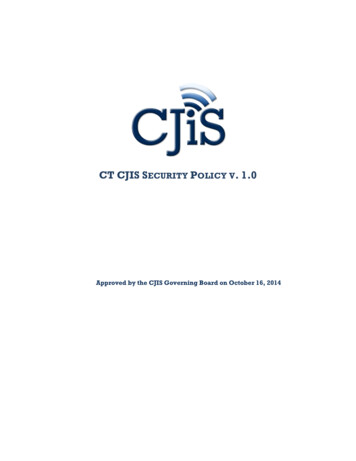
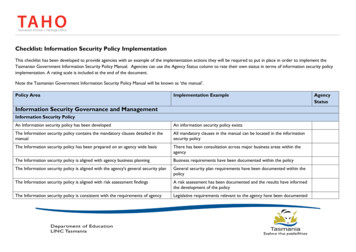



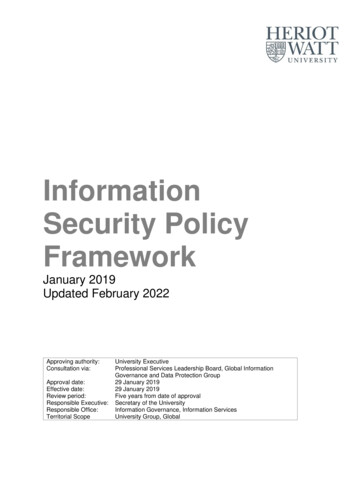

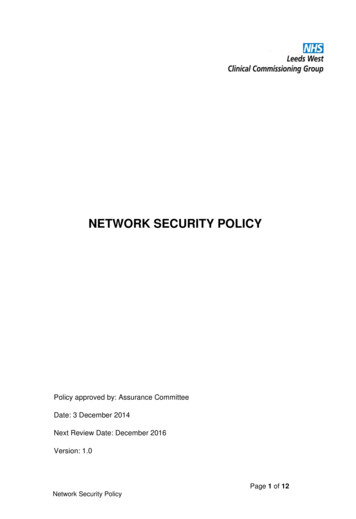
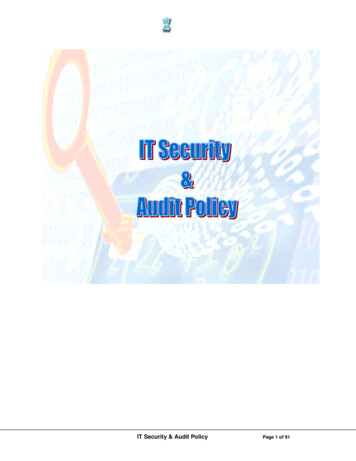
![Baseline IT Security Policy [S17] - GovCERT](/img/42/s17-v7-en.jpg)
